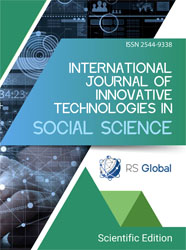ANALYSIS OF THE CURRENT STATE OF UNEMPLOYMENT IN SOCIETY
Abstract
The aim of this study is to examine the current unemployment situation in Mongolian society and assess its effects on social security. By 2024, the unemployment rate in Mongolia had reached 5.2%, negatively impacting social stability and serving as a key obstacle to economic growth.
The research drew on data from the National Statistics Committee, research materials, and the findings of the labor market demand barometer survey. Employing a systems approach methodology, the study analyzed unemployment and identified its challenges and implications for social security.
Findings revealed that out of Mongolia's 2.1 million individuals aged 15 and above, 1.2 million are part of the labor force, while 877,000 are not. Women make up 54.5% of registered unemployed individuals, with men comprising 45.5%. Notably, the unemployment rate is higher among young people aged 15-24 compared to other age brackets.
The primary factors contributing to unemployment include skill mismatches, challenges in transitioning from education to employment, systemic issues, and a lack of needs-based approaches. Additionally, issues such as labor market imbalances, low wages, and a significant rate of informal employment (24.3%) further exacerbate the problem.
Unemployment leads to adverse outcomes like decreased income, poverty, social exclusion, crime, and emotional strain, impacting social security directly. The research suggests the necessity of implementing holistic strategies to address unemployment and boost employment rates.
References
National Statistical Committee of Mongolia. (2024). Labor Force Survey 2024. National Statistical Committee of Mongolia.
National Statistical Committee of Mongolia. (2024). Labor Market Demand Barometer Survey. National Statistical Committee of Mongolia.
Ministry of Labor and Social Security of Mongolia. (2024). Unemployment Registration Report 2024. Ministry of Labor and Social Security.
National Statistical Committee of Mongolia. (2014-2024). Annual Unemployment Rate Reports [Data Collection]. National Statistical Committee of Mongolia.
United Nations Sustainable Development Goals. (2015). 2030 Agenda for Sustainable Development. United Nations.
World Bank. (2024). Mongolia: Labor market assessment. World Bank Group.
International Labor Organization. (2024). Youth employment in Mongolia: Challenges and opportunities. International Labor Organization.
Asian Development Bank. (2023). Economic outlook for Mongolia 2023-2025. Asian Development Bank.
Government of Mongolia. (2024). National Employment Support Program 2024-2030. Government Office.
Ministry of Education and Science. (2024). Vocational Education Development Strategy 2024-2030. Ministry of Education and Science.
Enkh-Amgalan, L. (2024, December 17). Interview with Minister of Family, Labor, and Social Protection. Itoim.mn. https://itoim.mn/a/2024/12/17/society/umm
Ministry of family, labor and social protection. (2023). Barometric study of labor market demand.
National Statistics Committee of Mongolia. (2024). Annual report on labor force and employment statistics. National Statistics Committee of Mongolia.
Tsedendagva, G. (2003). Economics. UB.
Views:
59
Downloads:
25
Copyright (c) 2025 Bolortsetseg Sumiya, Erdenechimeg Bor

This work is licensed under a Creative Commons Attribution 4.0 International License.
All articles are published in open-access and licensed under a Creative Commons Attribution 4.0 International License (CC BY 4.0). Hence, authors retain copyright to the content of the articles.
CC BY 4.0 License allows content to be copied, adapted, displayed, distributed, re-published or otherwise re-used for any purpose including for adaptation and commercial use provided the content is attributed.















